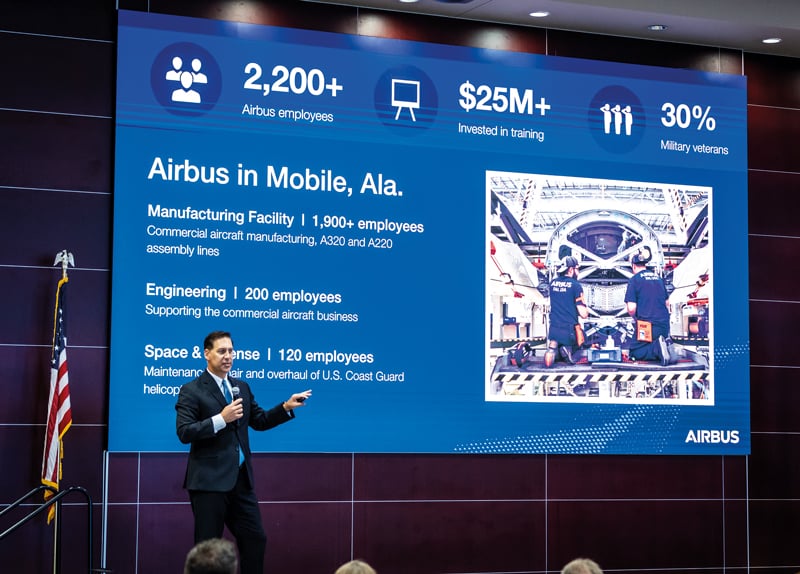Regional Cooperation
Tourism promoters are joining forces

Floridians are resilient when it comes to disaster recovery. According to a study by WalletHub, Florida was the fourth most severely impacted state in the nation in terms of losses resulting from natural disasters from 1980 to 2023.
During that period, the state sustained 20 climate events each producing in excess of $1 billion in damages. Coastal counties regularly experience hurricanes and tornadoes and even blue-sky events, along with sea-level rise, algal blooms, fires and floods.
In the case of major events like Category 5 Hurricane Michael in 2018, disaster recovery can take years and require coordinated efforts across county and state lines.
A man-made disaster, the 2010 Deepwater Horizon oil spill, dumped nearly 5 million barrels of crude into the Gulf and affected beaches and ecosystems from Texas to Apalachicola. Wildlife, reefs and flora are still recovering.

The ship begins to sink; the bow is partially submerged. Holes were cut in the hull in strategic locations, allowing inflow of water that filled the ship and ensured that it came to rest in the intended orientation. Photo courtesy of Destin-Fort Walton Beach
In response to the oil spill, the Florida Legislature created Triumph Gulf Coast, Inc., a nonprofit organization tasked with dispersing settlement funds paid to the state by BP. Moving beyond recovery, Triumph is now focused on assessing applications from public entities seeking funding for projects aimed at strengthening and diversifying the regional economy in Escambia, Santa Rosa, Okaloosa, Walton, Bay, Gulf, Franklin and Wakulla counties.
Currently in the pipeline are 27 proposals that have gained preliminary approval. They include one titled Adventure Within Reach. Submitted by VISIT FLORIDA in partnership with FloridaCommerce, it is intended to boost Northwest Florida tourism.
Separate from potential Triumph funding are Tourist Development Tax (TDT) revenues collected by counties throughout Florida. In Walton County, that tax, which is charged on short-term rentals, is 3% north of Choctawhatchee Bay and 5% south of the bay. According to the Walton County Clerk of Courts & County Comptroller, the South Walton TDT generated just over $60 million in fiscal year 2023, and the North Walton TDT produced $267,348.
Matt Algarin, the director at Walton County Tourism, favors a regional outlook on tourism promotion like that embraced by the VISIT FLORIDA proposal.
“Promoting the region is equally as important as promoting the destination,” Algarin said.
That sentiment is shared by Algarin’s counterpart, Jennifer Adams Kemp, who leads the tourism promotion organization Destin-Fort Walton Beach.
“We would rather them stay in the region than go somewhere else, even though they may not get to me the first time,” she said. “They will get to me at a later date.”

A diver inspects cooperative deployment sponsor signage on the front of the DEEP STIM III. Photo by Joe Kistel of Kistel Media
That regional approach has manifested itself in recent years in a broader effort across counties to promote all of Northwest Florida rather than any specific beach or location.
“We all have the same sand and water, from Escambia to Wakulla,” Algarin said.
Individual counties each have their respective attractions, but there is nothing to prevent visitors from parasailing off Panama City Beach one day and cooling off at Vortex Spring in Holmes County the next.
The greater goal for Algarin is to spread awareness that there are adventures within reach for anyone who visits Northwest Florida.
Those adventures can take place above and under the water.
“We have a multiyear plan to grow the artificial reef network,” Kemp noted.
Artificial reefs come in many shapes and sizes and are generally constructed of steel, concrete or limestone. Various types of marine life attach to their surfaces and in turn attract crabs, fishes and other food-chain members.
Andy MacAlexander is president and founder of the South Walton Artificial Reef Association (SWARA), a nonprofit that works with private and government entities to get more reefs onto the Gulf floor.

Tetrahedron modules (three-sided pyramids composed of concrete and limestone) were added to the deck of the vessel to give more complexity to the new artificial reef. Photo courtesy of Destin-Fort Walton Beach
Recently, SWARA participated in the sinking of a decommissioned 239-foot research vessel, the DEEP STIM III, 16.5 miles due south of Walton County. The sinking was celebrated as a tri-county artificial reef project. Visit Panama City Beach, Walton County Tourism and Destin-Fort Walton split the $750,000 cost to acquire, clean and deploy the ship, which was brought to Florida from Louisiana.
The Emerald Coast Reef Association and SWARA added reef modules to the ship’s deck, and the Coastal Conservation Association paid for towing.
“Can’t be a pirate until you sink a ship,” MacAlexander joked when asked about why he became involved in the project.
MacAlexander, a lifelong diver, said the return on investment in artificial reefs is far greater than the cost.
“For every dollar you put down, the community is getting 30 to 120 back,” he has calculated.
The STIM III immediately showed promise as a fish attractor. Within hours of its sinking, MacAlexander spied hundreds of red snapper checking out the wreck. Red snapper is a popular game fish that frequently tops 20 pounds; fillets fetch $15–$20 a pound at area seafood markets. And, the fish provides a food source for dolphins and other large predators.
“This one was a success,” MacAlexander said, adding all three counties are on board to sink another ship soon.

